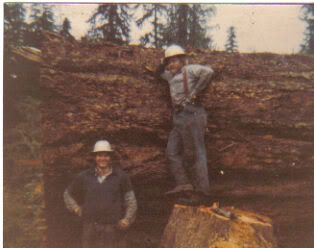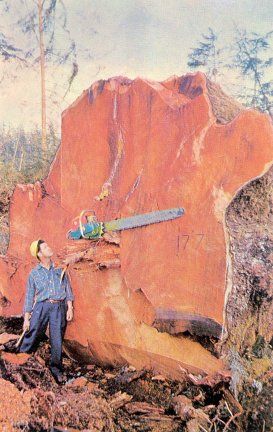JasperSparthing
ArboristSite Lurker
I really think some of the length of felled trees that is told by some is exagerated.
My Dad said he topped a tree at 240 feet up near Grisdale and he said that was much higher then normal. Measured with a new passrope that was known length not speculation.A tree topped at 275 or some such number is probably BS. Not because the trees weren't ever that high. The guylines wouldn't fit. They would all come up short.
Fact is there were a lot of big trees cut but for the most part they measured the base not the length. seen some real tall trees but never measured a one.
We yarded this one in 84. I remember it was 12 foot and it had 7 logs in it. The first three cuts were 40s. Some of the top cuts were shorter though. I'd guess to the tip top it was pushing 300 but not over.

If your father topped a tree at 240 feet, that's pretty darn big, did he say how much of the top came off? I know for spar trees there was a minimum width of like 20 to 30 inches for the cut, so you might get 40 to 100 feet ofaddition top. That would make your fathers tree about 300 footer or better.






